This page is accurate, but its presentation is very much a work in progress.
How the GH-2 works
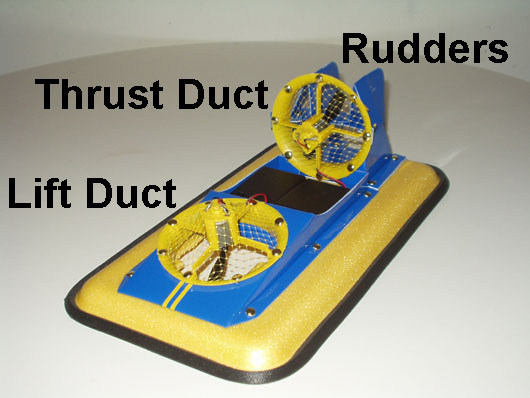
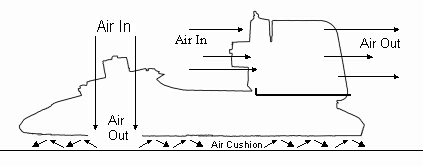
The GH-2 hovercraft has two ducts - a lift duct in the front and a thrust duct in the back. The lift duct sends all of its air underneath the craft so that the craft rises up on a cushion of air. The thrust duct sends all of its air out the back to provide thrust amd send the craft forward. As the air is sent out the back, it flows past rudders which help the craft go straight.
How the GH-1 works
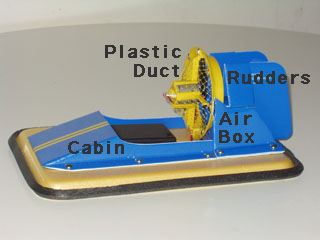
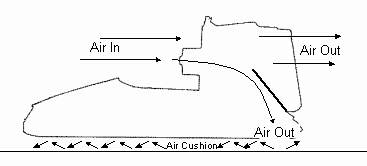
The GH-1 hovercraft has just one a plastic duct. The duct sends half of its air underneath the craft to create a cushion of air and sends the other half out the back to send the craft forward. The GH-1 has rudders which work just like the GH-2.
How the airbox is used in the GH-2

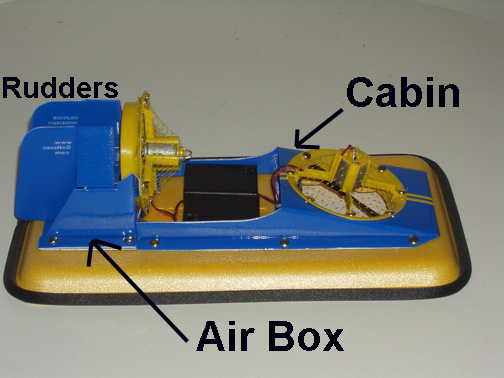
Both hovercrafts use a part called an "airbox" to hold up the duct at the rear.
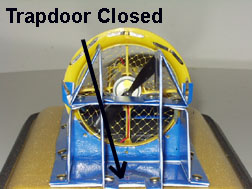
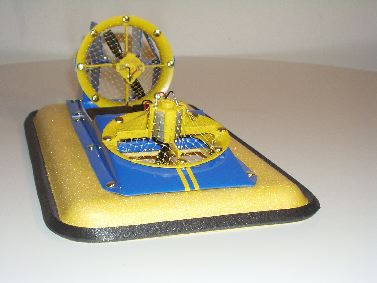
The airbox from Goldstein Hovercraft has a trick up its sleeve: a trap door. As the name suggests, the trapdoor opens and closes. When the trapdoor is closed, all of the air from the rear duct is sent out the back to provide thrust. The GH-2 is normally operated with its trapdoor closed.
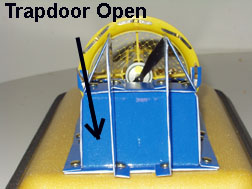
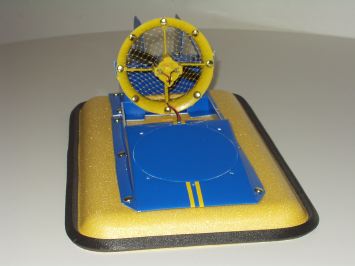
When the airbox trapdoor is opened, half of the air from the rear duct is sent underneath the craft to provide lift. Since the craft is now getting lift from its airbox, the lift duct in front can be removed. Of course, with only one duct, the craft has only half as much lift and half as much thrust, but it also requires half as many batteries. It is nice to have a choice. (And of course, that second duct can be used in a second hovercraft. Race, anyone?)
How the airbox is used in the GH-1

Since the GH-1 hovercraft comes with only one plastic duct, it always operates with its airbox trapdoor open. The GH-1's cabin and hull are optimized for one duct operation by being smaller and lighter.
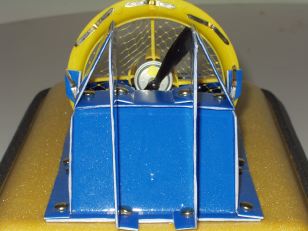
© Goldstein Hovercraft, LLC
[This page is accurate, but its presentation is very much a work in progress]











